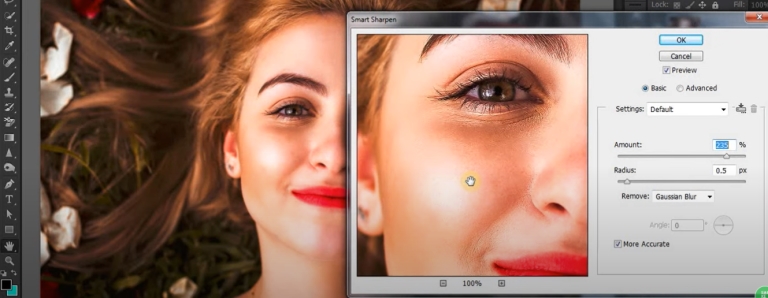How Is Photo Retouching Different From Editing?

For many, photo retouching and editing refer to the same thing. However, they are not the same and there exist some differences between the two. Sometimes even the professionals, such as photographers, use the terms interchangeably. Although they were very clear about what they meant by the term that they choose to use, they make things worse to understand for the end-users.
Though it is true that some actions are common to both processes, although with varying degrees, it is necessary to distinguish what constitutes photo editing and what makes photo retouching. Here is my take on this issue.
What Is Editing?
Once a photo shoot is over, the images are sent for post-processing, which is often done by the photographer in the studio itself. It is where most of the editing work happens. Some photographers are also retouchers, so they combine various steps special to these two processes, come out with a single workflow having elements of both and finish the project in one sitting. It is difficult for the common person to distinguish between the work of editing and photo retouching in this case.
The most important editing work that a photographer does is culling, which is also the first step of editing. Clicking an event or a situation might yield several similar images, some with good postures, others with some unwanted elements. It is important to select only a few good images related to an event or situation and discard unnecessary images. This process is called culling and, depending upon the number of images, it might be a tiresome and time-consuming job.
After culling, you are left with a few images compared to hundreds of images that you shot for the event. These images are still far from perfect as there might be some lighting, exposure, or brightness issues. Photographers use a selection of special software, such as Lightroom, that helps them crop and correct these errors by adjusting brightness and colors. These are all parts of editing although some of these may also become standard steps of a photo retouching process.
For most photographers, editing is usually the last step of the process to make images deliverable. Sometimes, for some inherent issues with the photographs or to cater to special requests from the clients, the images need to be altered further. Such editing work is beyond the scope of the typical job of a normal photographer and, thus, the special service of a retoucher is required.
What Is Retouching?
To put it simply, retouching entails extra polishing work to make an image more presentable. This extra work may not be necessary at all times. Some might be happy with the original work. However, there are some industry domains where photo retouching becomes an inevitable step before an image can be presented to the targeted audience. For example, online retailers are very well aware of the advantages of product retouching.
Some other examples where this becomes necessary can also be cited. While taking a shot of a building on a street, an unwanted person might come in front of the camera. Similarly, a client might request, after seeing a photograph, to delete or add a person to the photograph. There might be some unwanted elements or clutters visible throughout the photograph. Sometimes, an acne or a bruise mark on the face doesn’t look good and the client wants to get rid of it. It might be the case that a client wants to completely change the color of the clothes or enhance the skin tone or something of that sort.
All the above issues and many more come under the purview of a photo retoucher. This person is specialized in rectifying such errors and enhancing images to the taste of clients. As it seems clear now that retouching encompasses work that might be considered ‘extra’. Basically, these might also be termed image manipulation. But here is a little different.
While image manipulation might alter the image significantly and may sometimes be considered unethical, image retouching should not be considered the same. The job of a retoucher is to clean the photograph from unwanted elements and make the subjects of the image more highlighted, giving them more focus and attention. The team for professional retouch for product images always uses this technique.
Retouching is also different from extraction and layering. While extraction is needed in every business domain, especially in online marketplaces, layering requires a very high level of expertise and experience and is often a requirement in the fashion industry. Through layering, you actually create an altogether different image from a range of photographs and, thus, it can better be classified as a work of art.
Extraction, on the other hand, means the separation of objects from their background in an image. Think of the photograph of a shirt or a woman’s gown. It is the job of the retoucher to remove the cluttering background that includes hangers and clips to hold the garments in place and keep them wrinkle-free. Also, you need an image to be complete without a background to look nice on a website, or portal on the online marketplace. Image masking and clipping path are two popular ways to achieve the targets of an extraction job. PicsRetouch is a professional company for retouching and editing.
At Last
Some of the common retouching jobs include removing distracting objects, taking a blemish away, removing a trash can or covering it up with something nice, moving one object from one part of the image to another, whitening teeth, smoothing skin, and adding a dash of color or an artistic touch here a there. It is clear that photo retouching means something extra done to the image to eliminate imperfections and prepare it for final presentation.













